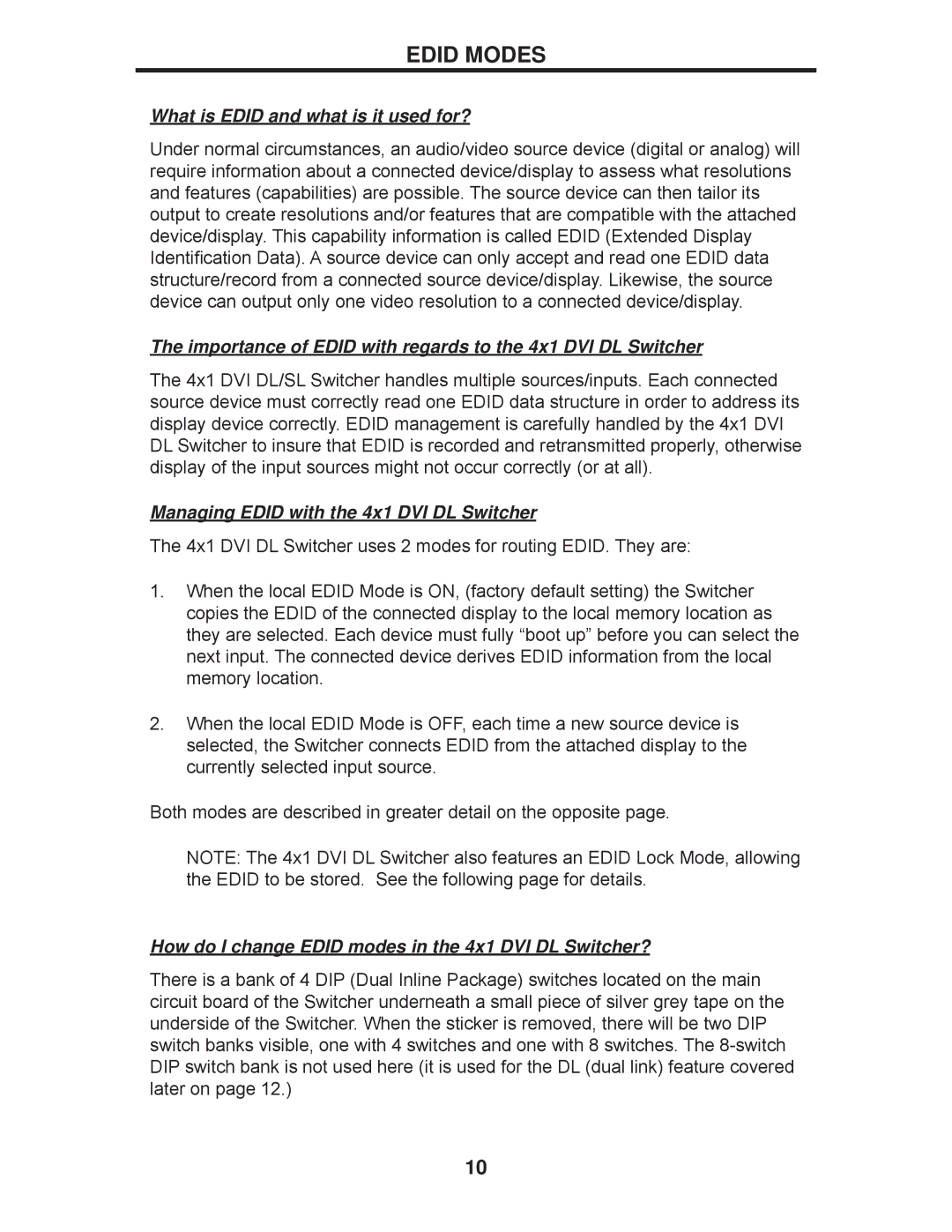EDID MODES
What is EDID and what is it used for?
Under normal circumstances, an audio/video source device (digital or analog) will require information about a connected device/display to assess what resolutions and features (capabilities) are possible. The source device can then tailor its output to create resolutions and/or features that are compatible with the attached device/display. This capability information is called EDID (Extended Display Identification Data). A source device can only accept and read one EDID data structure/record from a connected source device/display. Likewise, the source device can output only one video resolution to a connected device/display.
The importance of EDID with regards to the 4x1 DVI DL Switcher
The 4x1 DVI DL/SL Switcher handles multiple sources/inputs. Each connected source device must correctly read one EDID data structure in order to address its display device correctly. EDID management is carefully handled by the 4x1 DVI DL Switcher to insure that EDID is recorded and retransmitted properly, otherwise display of the input sources might not occur correctly (or at all).
Managing EDID with the 4x1 DVI DL Switcher
The 4x1 DVI DL Switcher uses 2 modes for routing EDID. They are:
1.When the local EDID Mode is ON, (factory default setting) the Switcher copies the EDID of the connected display to the local memory location as they are selected. Each device must fully “boot up” before you can select the next input. The connected device derives EDID information from the local memory location.
2.When the local EDID Mode is OFF, each time a new source device is selected, the Switcher connects EDID from the attached display to the currently selected input source.
Both modes are described in greater detail on the opposite page.
NOTE: The 4x1 DVI DL Switcher also features an EDID Lock Mode, allowing the EDID to be stored. See the following page for details.
How do I change EDID modes in the 4x1 DVI DL Switcher?
There is a bank of 4 DIP (Dual Inline Package) switches located on the main circuit board of the Switcher underneath a small piece of silver grey tape on the underside of the Switcher. When the sticker is removed, there will be two DIP switch banks visible, one with 4 switches and one with 8 switches. The
10
